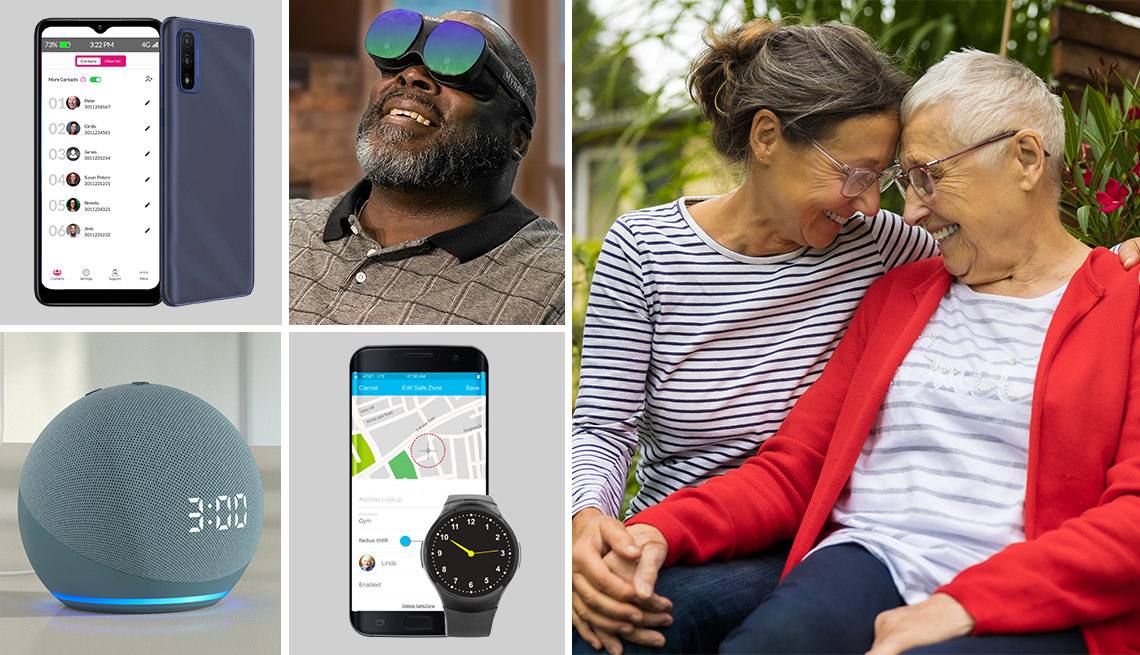
5 ways tech can help caregivers of dementia patients
- Select a language for the TTS:
- UK English Female
- UK English Male
- US English Female
- US English Male
- Australian Female
- Australian Male
- Language selected: (auto detect) - EN
Play all audios:

General caveats: “Wearables are great when they’re worn and charged,” Kaye says. But many people don’t like the wristbands. Some people who are willing to use wearables may forget to use
them or not use them properly. And if they’re taken off for charging, an older adult might not remember to put the smart watch back on. 4. SIMPLE PHONES, TABLETS AID IN TWO-WAY TALKS At
some point, people with dementia can no longer use the iPhone or Android devices they may have had for years. Instead, they may be candidates for a device such as the $349 RAZ Memory Cell
Phone, a one-touch dial picture phone from Cabin John, Maryland, start-up RAZ Mobility, winner of a 2022 AARP start-up pitch competition. The phone has an always-on screen with up to six
named pictures shown at once, each associated with a contact the user can tap to call. It has no keypad. A caregiver can remotely edit contacts via an iPhone or Android app. Caregivers can
place video calls, a feature the person with dementia cannot initiate. Although not specifically created for older adults with dementia, the Lively Jitterbug Flip2 phone includes a large red
emergency response button directly on the keypad along with other large buttons. It connects the person with an around-the-clock agent. Flip2 costs $99.99 with a $19.99-a-month unlimited
talk and text plan that includes voicemail and brain fitness games, but you must upgrade to a monthly “preferred” $39.99 plan for the 24/7 urgent response service. The GrandPad tablet,
targeted at people 75 and older, also wasn’t developed for dementia patients. For $95 a month, you get the hardware, access to cellular and 24/7 customer care. A user can connect to family
through an encrypted private network, which is meant to be off-limits to spammers and telemarketers. GrandPad sellers include the company itself, Amazon, Consumer Cellular and Walmart. 5.
VIRTUAL REALITY ISN’T EASY TO USE Some older adults have embraced virtual reality (VR) to overcome some of the mental, physical and social challenges that come with aging. A VR headset
shuts out the outside world and immerses the wearer in an alternate reality they typically cannot visit in real life. A company called MyndVR has a cognitive app in which a person wearing a
headset is asked to identify the source of sounds played in a kitchen, such as water running in the sink. The EVRTalk virtual reality experience from the Council on Aging of Southwestern
Ohio is directed at caregivers to train them on challenges they may face. VR sessions address topics such as caregiver burnout, incontinence and medicine management. However, further
expansion of the program is on hold because of how quickly the technology for VR glasses and goggles is changing. The Council on Aging is exploring other opportunities in the space,
Communications Director Paula Reichle Smith says. The barriers in adopting virtual reality technology may be higher than for other areas. Cost, complexity and a person’s resistance to
wearing a headset are the biggest, preventing VR from becoming mainstream, says Kaye in Oregon. “There’s still a large amount of work that needs to be done to have something that is easily
applied, effectively helpful and low cost,” he says. _This story, originally published May 1, 2023, has been updated with new prices and other changes._
